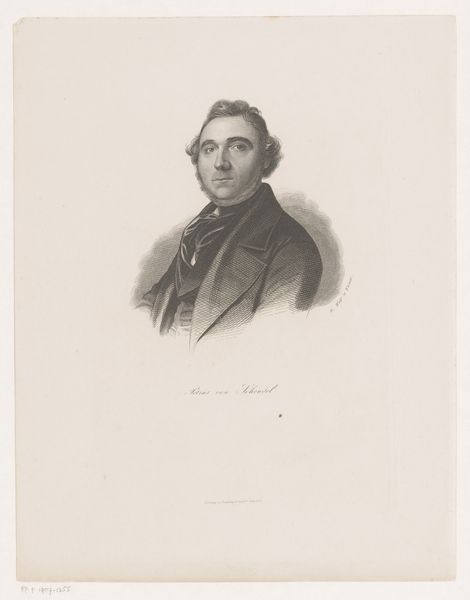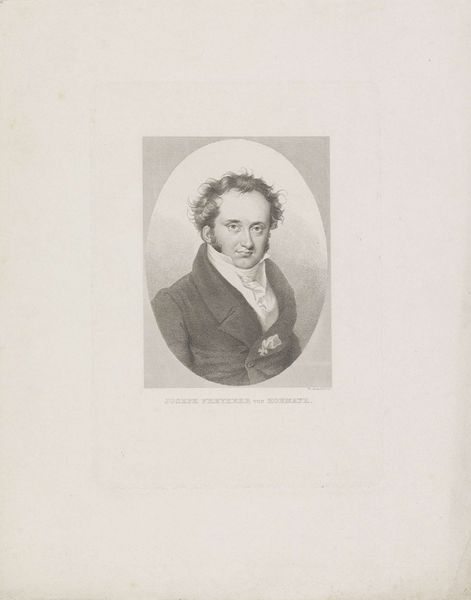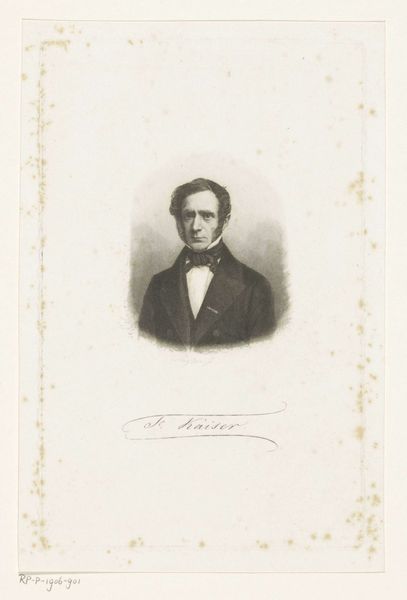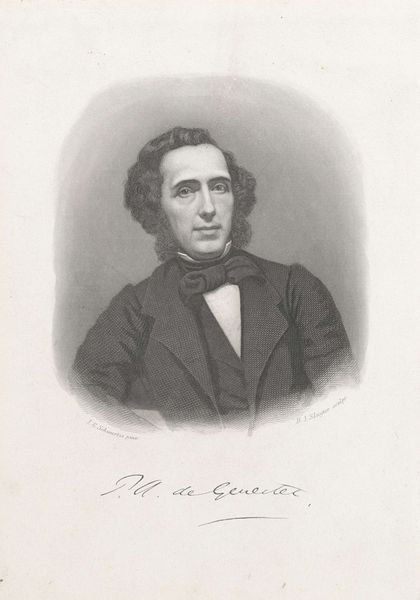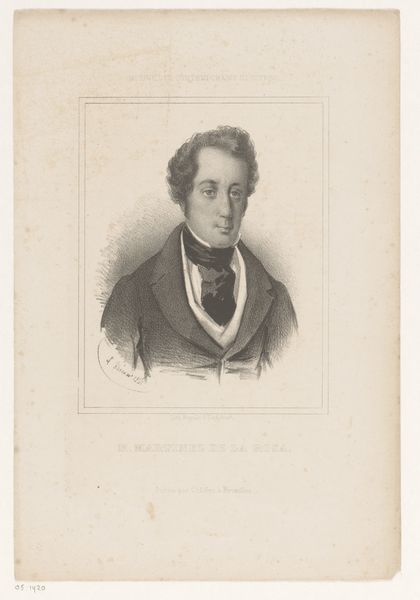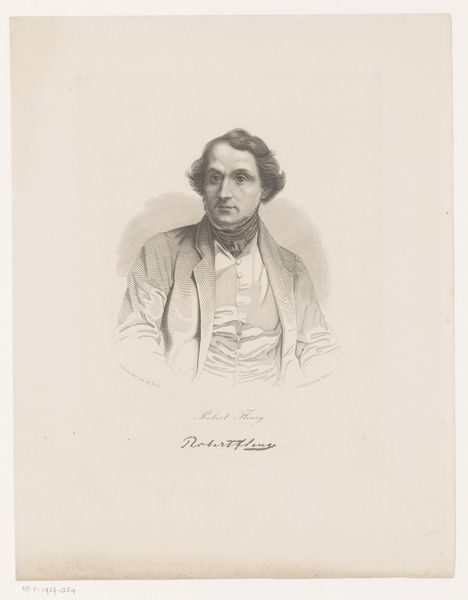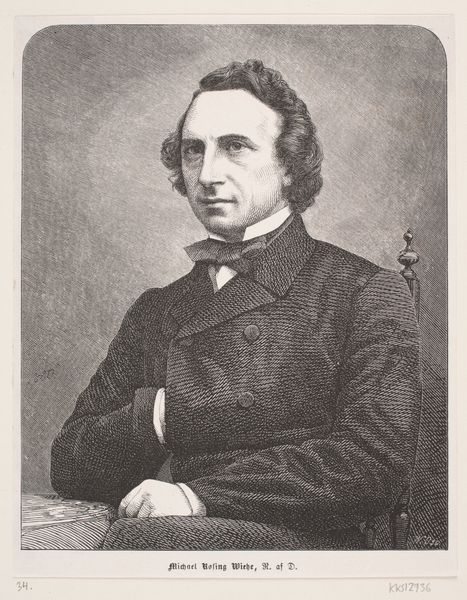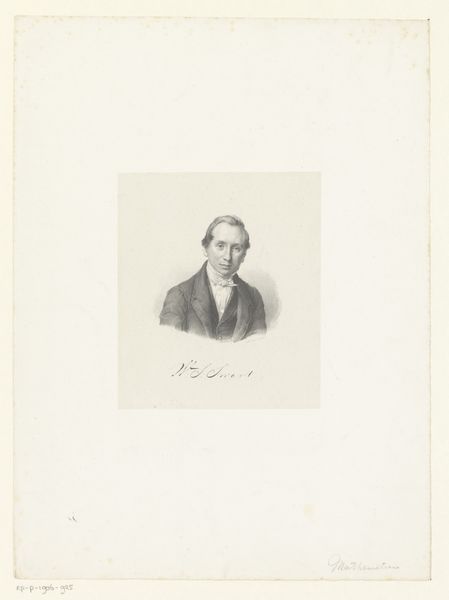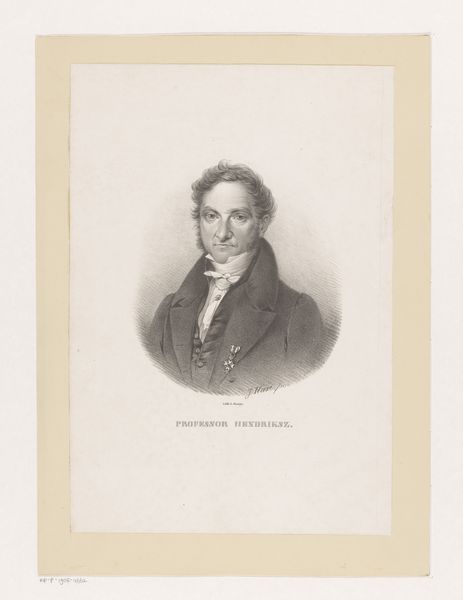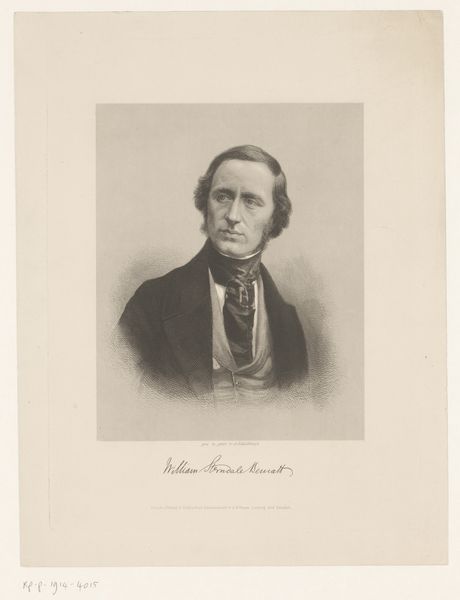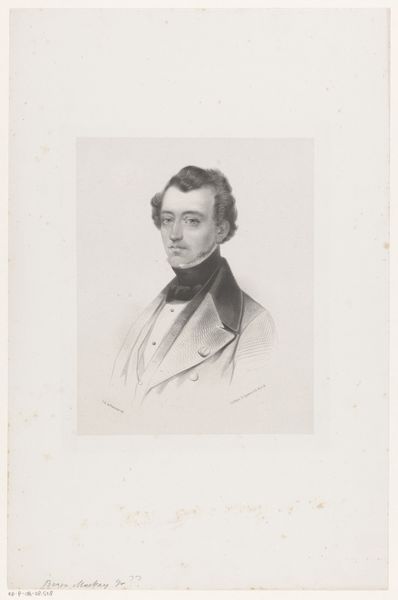
drawing, paper, pencil, graphite
#
portrait
#
drawing
#
paper
#
pencil
#
graphite
#
portrait drawing
#
realism
Dimensions: height 275 mm, width 176 mm
Copyright: Rijks Museum: Open Domain
Curator: This is a portrait drawing from 1869 by Willem Steelink. The sitter is Petrus Augustus de Genestet. It’s rendered in graphite and pencil on paper. Editor: The first thing that strikes me is the intensity of his gaze. There’s almost a mournful quality to it, don't you think? And the rendering feels so incredibly life-like, almost photographic. Curator: Realism was, after all, very much in vogue at this time, but this work has other important elements. De Genestet was a rather influential Dutch theologian and poet and we can observe here how portraiture functioned to immortalize figures within the Dutch cultural landscape of the nineteenth century. Think of the way in which this image then might circulate as a carte de visite or published in periodicals, thereby contributing to his fame. Editor: I see him less as a theologian and more as a Byronic hero. I mean look at the way he's presented: the dark coat, the undone bow tie, and the slightly disheveled hair all point to the aesthetics of Romanticism. He has this air of brooding intensity, maybe even intellectual rebellion against, as you suggest, the establishment. Curator: But the details surrounding his likeness reflect respectability, right? The high collar and precisely knotted bow, for example, speak to the sartorial conventions of bourgeois identity, particularly among intellectuals of the time. It indicates an acceptance of social norms, not a rejection of them. I suspect a bit of cultural nostalgia clouds your judgement here. Editor: Perhaps. Still, this image does more than just document an appearance; it conveys an aura. I’m more concerned with the feelings evoked by this drawing; for instance, how does the choice of a soft medium such as graphite contribute to our reading of de Genestet? Curator: Indeed. I appreciate your concern for that aspect. I see such imagery also acting in tandem with other texts, traditions, and practices within the institutional spaces of politics, education, and religion. This drawing is not created nor received in a vacuum. Editor: Very true. Ultimately, though, this work serves as a powerful meditation on character and representation, bridging historical context and individual perception. Curator: Absolutely, a powerful demonstration of the complex interplay of cultural factors and the ways of creating public figures.
Comments
No comments
Be the first to comment and join the conversation on the ultimate creative platform.
